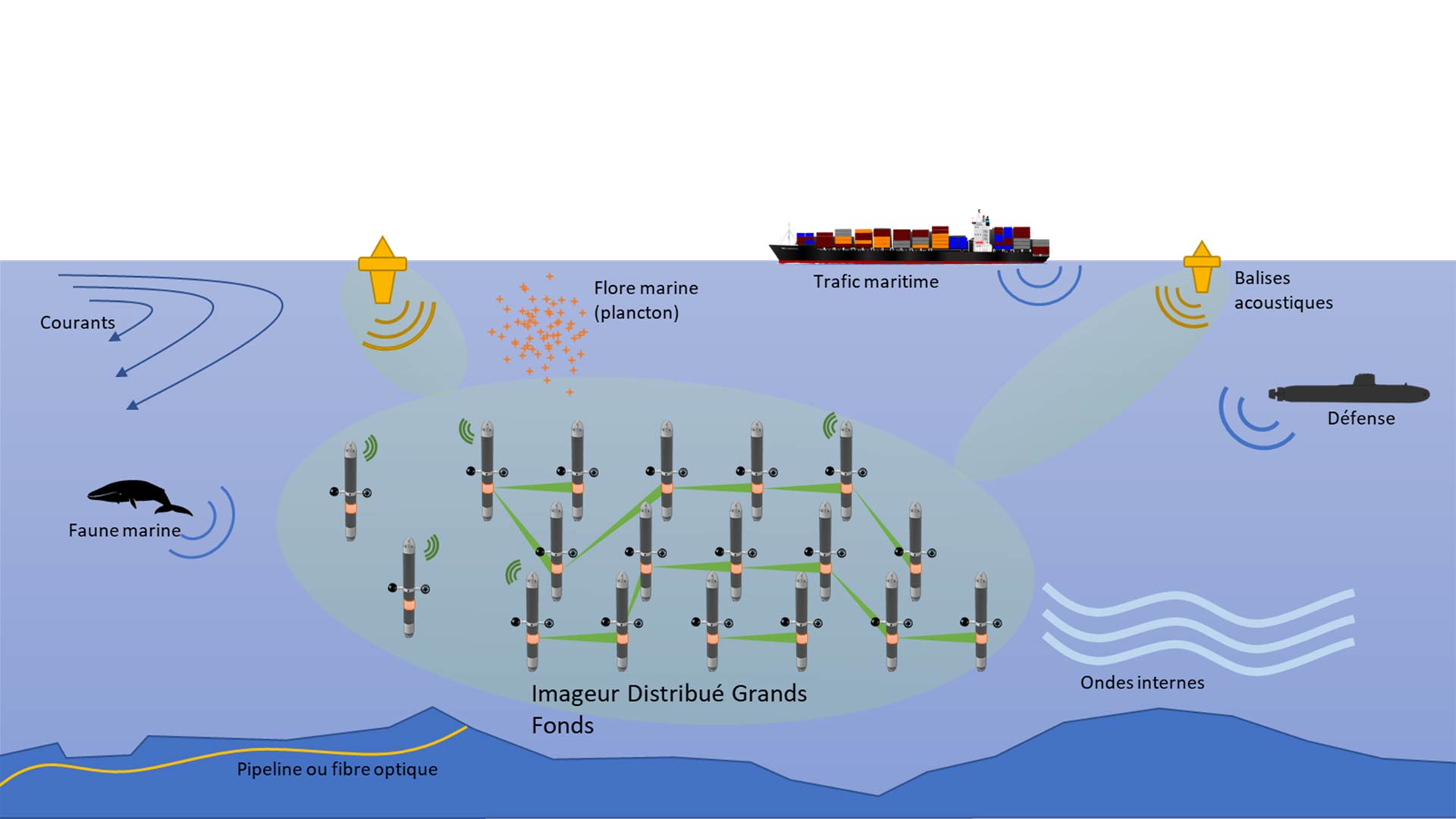

The project focuses on the development of the technological building blocks for a system consisting of a giant acoustic antenna formed by a swarm of interconnected, hybrid ROVs that can be located from the surface. The applications are many and varied, including oceanographic studies of currents and internal waves, acoustic studies to locate marine mammals or maritime traffic, pollution monitoring, and even military applications, with the creation of ultra-low frequency antennas.
A highly innovative concept
Based on initial theoretical results developed at ENSTA Bretagne, the principle of the system is as follows: each robot is equipped with an acoustic recorder. The information collected by each robot is then exchanged optically using a laser specially designed by Oxxius and electronics developed by Hexa-H and ENSTA Bretagne.
The robots stay in formation thanks to distance information and a stabilization system coupled with coordination algorithms to be developed at the ENSTA Bretagne robotics laboratory. It will then be possible to construct a “synthetic” antenna that will greatly improve the detection capabilities that a single robot could have achieved.
Finally, in order to locate the swarm precisely underwater, Ifremer will work with ENSTA Bretagne to develop a high-precision long-distance positioning system. Surface acoustic beacons can be used to create a kind of underwater GPS.
Descending to great depths is a major challenge that will be met by FMC Composites, supported by ENSTA Bretagne's mechanical engineering department. The company behind the project will develop a composite body that can withstand pressures down to 6,000 meters while offering special compressive properties. To reduce energy consumption, the body can be compressed, reducing the need to adjust the robot's buoyancy as it descends to greater depths.

An ecosystem at the tip of Brittany at the forefront of marine innovation
This project benefits from a local environment that is particularly conducive to innovation in the marine world. In Brest, the best specialists in the field can easily exchange ideas and set up projects around new breakthrough concepts. The many research facilities in the area also facilitate the implementation of research and development projects. In this field, ENSTA Bretagne boasts a range of facilities, unique in France, dedicated to marine robotics and the study of materials in the marine environment. A whole range of equipment will be used for this project: the brand new hydrographic launch boat, the robotics workshop for rapid prototyping, the large 6m deep test tank, as well as the mechanics department’s materials testing and measuring facilities.
The project, with a budget of around 1 million Euros for ENSTA Bretagne out of a total of 5 million, will also be able to count on a strong team of research professors, engineers and technicians, and will enable them to contribute to the development of future technologies through their theses.




















